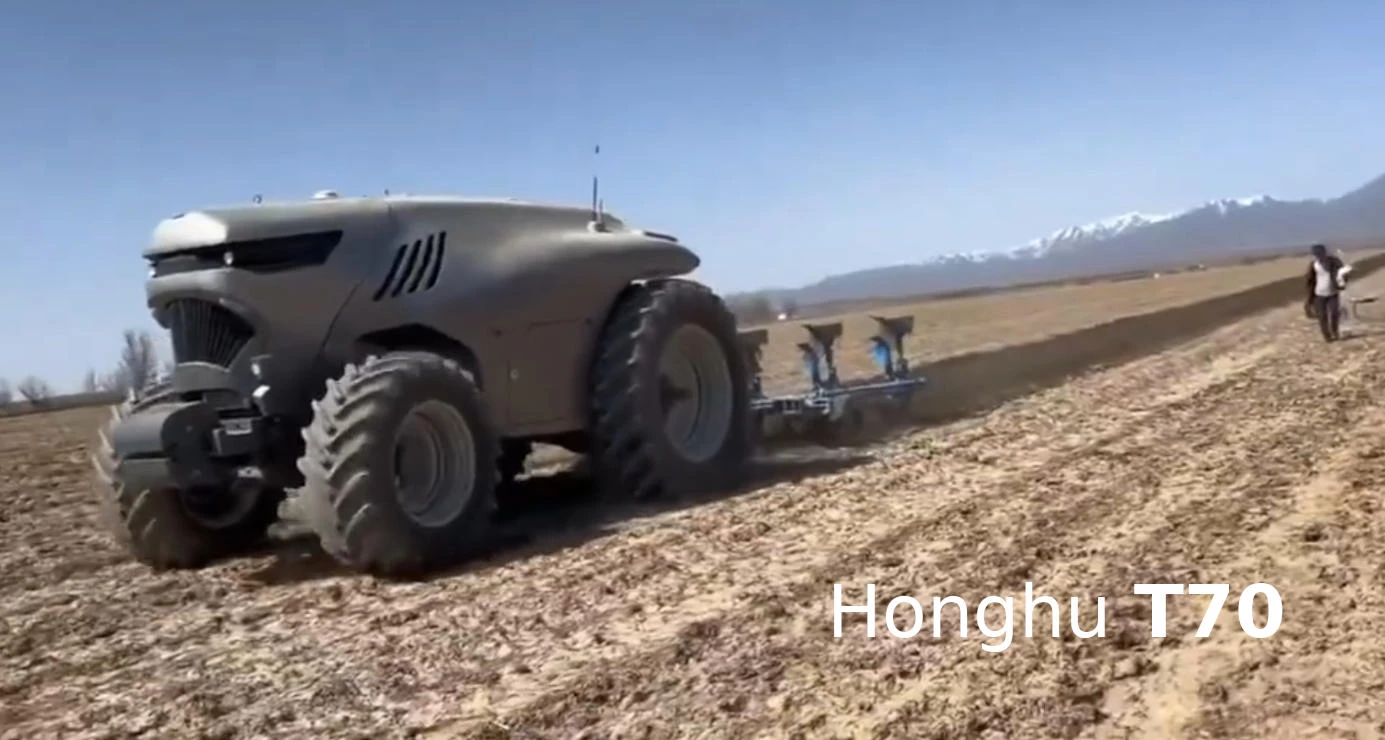
Honghu T70: China’s autonomous electric tractor that can run up to 6 hours per charge (EN)
China has unveiled the Honghu T70, a fully autonomous electric tractor marking a tangible step toward smarter field operations. Powered by a lithium battery and a permanent-magnet synchronous motor, the machine executes field tasks without a driver, following pre-planned routes. As it works, it captures soil and crop telemetry for agronomic analysis and continuous optimization.
Who’s behind it and where it’s already working
The tractor is developed by Shiyan Guoke Honghu Technology (十堰国科鸿鹄科技). Public demonstrations took place at Chinese industry events, with pilot deployments reported in agricultural regions including Hebei Province. Trials in Guangzhou’s Zengcheng district used multiple T70 units for primary tillage in rice production, earning positive feedback for pass quality and consistency.
Core architecture & specs
- Energy & drive. Lithium battery supply; permanent-magnet synchronous traction motor with intelligent power electronics.
- Two independent electric machines. One for traction, one dedicated to the implement/PTO drive—improving load control and overall efficiency.
- Autonomy & accuracy. Up to 6 hours of driverless operation on a single charge; guidance precision around ±2.5 cm (RTK-class).
- Data & analytics. Real-time field data collection with agronomic analytics and route refinement.
Note: official, detailed datasheets (power output, battery capacity, weight, wheelbase, implement classes) remain limited in open sources. Current reporting focuses on drive architecture, autonomy and guidance accuracy.
What tasks the Honghu T70 covers
The stated scope spans core fieldwork—tillage, seeding, inter-row cultivation, and even harvest support (as a tractor platform for trailed machines). For farm managers, this enables mission-based planning and remote oversight, with uniform passes and minimal skips and overlaps.
What it means for Ukrainian farms
- Cost structure & timing. Electric traction plus autonomy can cut fuel and labor-related variability and help exploit short weather windows to cover hectares fast.
- Precision & repeatability. The claimed ±2.5 cm accuracy is RTK-grade—suitable for strip-till, inter-row work and precise input application.
- Infrastructure. You’ll need charging logistics (power supply, charging bays/battery handling) and digital coverage for telemetry and dispatch. Farms with in-house renewables can unlock extra value.
- Implement compatibility. A dedicated electric PTO is advantageous for energy-intensive implements; still, verify hydraulic/electric requirements case by case.
Limitations & open questions
- Runtime. Up to 6 hours is solid for an e-tractor, yet peak-season operations may require fast turns between charges or machine/battery rotation.
- Service & localization. Broad adoption in Ukraine depends on parts availability, service coverage and operator training.
- Dimensions/traction class. Detailed figures (kW, Nm, weight, base, approved implements) are not widely published yet—an official datasheet is awaited.
Where adoption makes sense today
- Vegetables, berries and rice systems demanding high pass repeatability—mirroring reported Chinese use cases.
- Enterprises with own generation (PV/wind) where charging can be synchronized with on-site production.
- Night shifts near populated areas, benefiting from low noise and zero exhaust.
For Ukrainian growers: spares & repairs—no downtime
Even with autonomous electrics, couplers, wear parts, bearings, shafts and belts still determine uptime. During peak workload, a local supplier is your safety net: Bas-Agro LLC (Cherkasy) maintains production and stock of fast-moving parts for seeders and headers and ships quickly across Ukraine. Check availability and order via bas.ua in the catalog of spare parts for agricultural machinery — a practical insurance against downtime when it matters most.
The Honghu T70 blends electrification with autonomy: separate traction and PTO drives, live telemetry, RTK-class accuracy and up to 6 hours per charge make it compelling wherever repeatability and pass quality are critical. In Ukraine, the decisive factors will be service, charging infrastructure and compatibility with existing implements. If those align, the economics of electric autonomy start working in the farm’s favor.
Add a comment
Comments
There are no comments yet. Be the first to comment.

You must be logged in to post a comment
Login